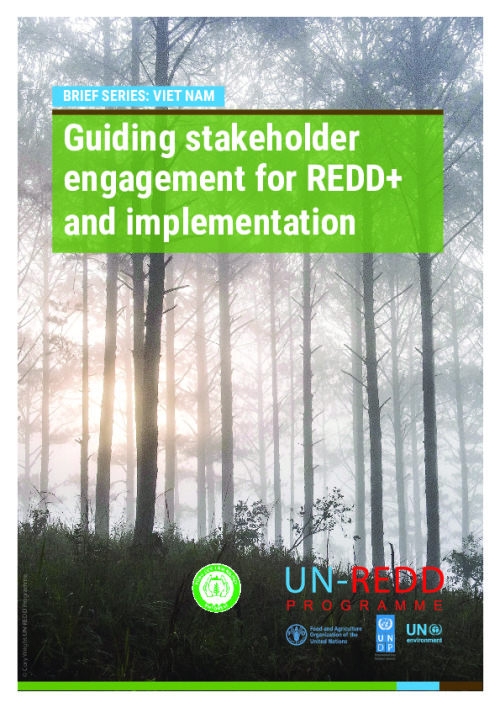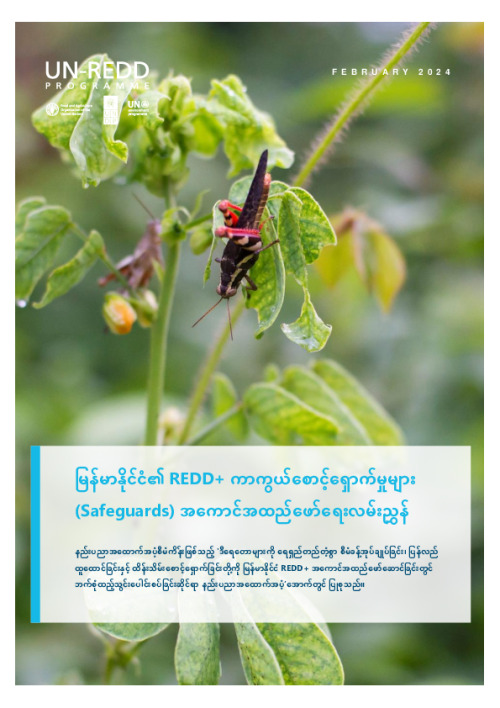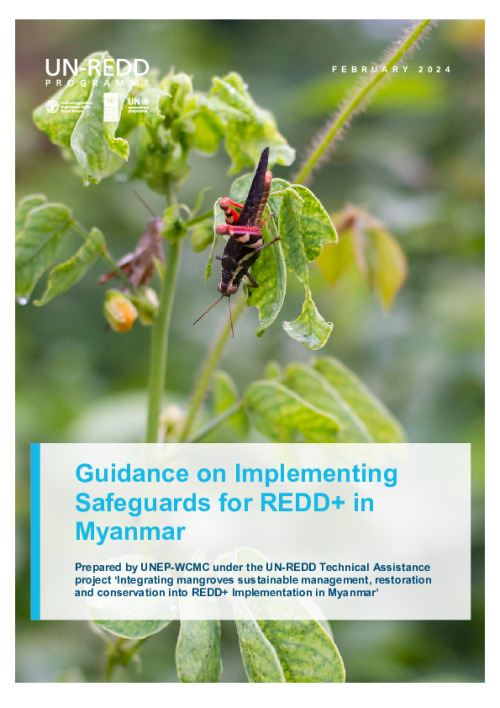Viet Nam infobrief series: Guiding stakeholder engagement for REDD+ implementation

*This is part of a series of info briefs produced in 2019 on the main lessons learned from Viet Nam's National REDD+ ProgrammeÂ
This brief presents key issues that emerge from the assessment of stakeholder engagement and FPIC principles. It looks specifically into the extent to which guidelines, as the main tools, serve to provide possibilities for stakeholders who relate to, depend on, as well as manage the forest. This means that these guidelines are meant to guide stakeholder engagement through the entire process of planning, implementation, to monitoring and evaluation.Â
At the policy level, the UN-REDD Viet Nam Phase II Programme has taken several positive steps towards enhancing stakeholder engagement. First, it has been a challenge to develop one single set of common guidelines for the site level, SiRAP. This is an important accomplishment as it lessens the confusion about the directives for stakeholder engagement. Second, the Programme has largely been managed to make use of and build on the local governance and planning mechanism in which stakeholder engagement is integrated. This is done through, for instance, making use of the scope for participation in the grassroots democracy ordinance for the planning and implementing REDD+ packages at the site level. Third, the objective of awareness raising set by the Programme was met to some extent despite the challenges in bridging different understandings of the key concepts of stakeholder engagement. Fourth, the Programme’s guidelines leave some room for change and flexibility during implementation. This is built on a general realisation that stakeholder engagement is a learning process. Fourth, the guidelines highlighted vulnerable stakeholders and in particular women and ethnic minorities.Â
To accomplish stakeholder engagement and FPIC at site level is, however, an ambitious task, or rather, a long process. The attempt to integrate FPIC principle and benefit sharing pragmatically into one single document to guide stakeholder engagement adds to the challenge. The complex key elements of participation, transparency, accountability and representation will inevitably need contextualisation and adaptation at site level. For instance, to convey the full meaning of participation and adapt lessons into practice, which is central to engagement, take time and require changes in deep-rooted thinking and practices. Hence, formulating concise, contextual and concrete guidelines on stakeholder engagement and FPIC is a crucial, but difficult step in the process of accomplishing stakeholder engagement. The guidelines need to be short enough to be read and be useful, but still long enough to convey the meaning of key concepts and full value of stakeholder engagement. To add to the challenge, they need to be understood in a context very different from international principles and good practices from which they were written in the first place. Without a thorough understanding of what stakeholder engagement really means, there is a risk that stakeholder engagement and FPIC principles will only be respected on paper. Lastly, these challenges will inevitably increase for stakeholders from vulnerable groups who are weak in expressing their concerns such as women, ethnic minorities and other local communities living in or near the forest.
Download the resource
Size: (1.773 MB)


